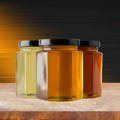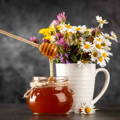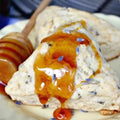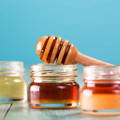
Honey Unveiled: A Foodie Guide to the USDA Honey Grading System
Delve into the nuances of honey quality with our guide to the USDA's grading system. Explore taste, clarity, and more, as we decode the world of honey for food enthusiasts.
FUN FACT: Mead, which is made from fermented honey, is the world’s oldest fermented beverage.
Subscribe
To join our mailing list and never miss an update!
Honey, the sweet liquid made by bees from flower nectar, carries culinary and health significance. Though the USDA offers a general framework of standards that reveal quality factors in honey. These encompass taste, clarity, moisture, and defects. Exploring the USDA's grading system exposes grade intricacies, processing effects, and honey color complexities, enriching our understanding of this natural delight.
The United States Department of Agriculture (USDA) employs a distinct approach in evaluating honey compared to its assessment of other agricultural products such as meat, poultry, or eggs. While honey is not officially assigned grades like these products, the USDA does furnish voluntary grading standards for honey producers to gauge the excellence of their output. These standards prove valuable in aiding both producers and consumers in comprehending the distinctive attributes of various types of honey.
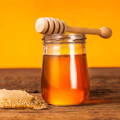
The grading criteria established by the USDA for honey encompass an array of factors including flavor, clarity, aroma, moisture content, and the absence of imperfections like crystallization or fermentation. However, it's essential to note that a higher grade does not uniformly translate to superior quality honey.
This discrepancy stems from the fact that to meet the requirements to be identified as Grade A honey, both heating and micro-filtration must occur. While heating and micro-filtration renders honey visually appealing with remarkable clarity, it also results in the loss of a significant portion of its properties that are naturally beneficial to your health.
When grading honey, certain definitions must be established in order to frame the criteria to qualify for each classification.
FLAVOR AND AROMA
The flavor and aroma should reflect the primary floral source from which the bees have gathered the nectar to make the honey. For example, Tupelo honey is produced when honeybees collect nectar from the blossoms of the white Ogeechee tupelo tree.
CLARITY
Clarity is defined at the transparency of the honey. It is evaluated based on the absence or presence of pollen granules, tiny air bubbles or any other fine material suspended in the honey. This is the reason that only filtered honey can meet the qualifications to be categorized as Grade A fancy honey. Raw and unfiltered honey will have some of these finer particles in suspension because it is not over processed. Within the filtered honey category, clarity is divided into three levels: clear, reasonably clear and fairly clear.
MOISTURE CONTENT
The moisture content of honey will vary depending on the season, the region and the variety. As a general rule, moisture content should be in the range of 16%-18%. Honey with a high moisture content has a thinner density and will begin to ferment as moisture content rises above 20%, resulting in a sour taste.
u.s.d.a. honey grading classification
The USDA's honey grading classifications encompass the following categories:
• U.S. Grade A Fancy: Honey that attains the utmost standards in terms of appearance, flavor, and absence of defects.
• U.S. Grade A Amber: Honey characterized by a slightly deeper hue and a more robust flavor compared to Fancy grade.
• U.S. Grade A Dark: Honey featuring a darker shade and a more pronounced flavor profile.
• U.S. Grade B: U.S. Grade B honey is defined as honey that falls short of the quality requisites for Grade A, yet remains suitable for human consumption.
Trending Articles
HONEY COLOR GRADING
Additionally, the USDA offers guidelines for grading honey based on color. The color of honey often serves as an indicator of its flavor and the floral sources from which the nectar was collected.
The USDA's honey color grading system generally entails visually comparing a honey sample to a set of color benchmarks. These benchmarks span from water white to dark amber. Here's a simplified overview of the color classifications:
• Water White: Honey exhibiting an extremely pale, nearly colorless appearance. This variety is commonly the lightest and clearest.
• Extra Light Amber: Honey possessing a very light color with a subtle amber tint. It remains comparatively light when juxtaposed with darker variants.
• Light Amber: Honey showcasing a pale amber shade. This grade of honey is frequently encountered in the market.
• Amber: Honey featuring a medium amber hue. It's slightly darker and boasts a more pronounced flavor than the lighter alternatives.
• Dark Amber: Honey displaying a deeper amber color. Generally, it boasts a more robust flavor in comparison to lighter varieties.
• Very Dark: Honey characterized by a profound, dark hue. This kind of honey often boasts a potent flavor and might exhibit a more intense floral or earthy essence.
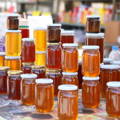
The grading procedure involves comparing a honey sample against the color benchmarks and determining the closest match in terms of color. Given the subjectivity of this process, different individuals may perceive the color of a specific honey sample with some variance.
It's essential to bear in mind that the color of honey can evolve over time due to factors such as crystallization, exposure to light, and heat. The USDA's color grading system constitutes merely one facet of the assessment of honey quality, with other elements like flavor, aroma, and absence of defects also factored in during the evaluation process.
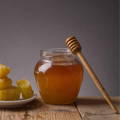
In summary, the United States Department of Agriculture's (USDA) voluntary grading standards serve as a valuable tool for comprehending the intricacies of honey quality such as flavor, color, and clarity. It's worth noting that a higher grade in honey doesn't necessarily guarantee superior quality, as certain processes might inadvertently diminish its inherent health benefits.
Additionally, the USDA's method of evaluating honey based on its color provides insights into the diverse flavor profiles and floral origins associated with each shade. Ultimately, the evaluation of honey encompasses a comprehensive consideration of factors ranging from its visual appearance and aroma to its taste and absence of defects, collectively offering us a holistic understanding of this exquisite natural delight.
Trending Products
Copyright©2023 All rights reserved. We love to have you share our article as long as you include a direct link to this page. This article or any portion thereof , including all images, may not be reproduced or used in any manner whatsoever without the express written permission of Gypsy Shoals Farm.

